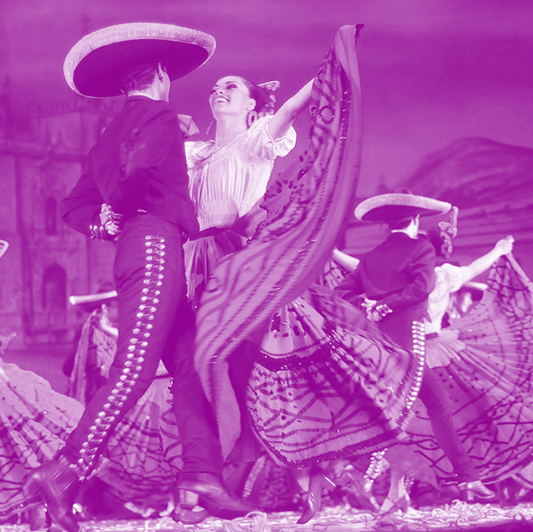
As the spirits return during the tradition of Día de los Muertos, we celebrate our past in this annual concert dedicated to the holiday. Join us as we recreate some of our audience’s favorite memories from past Día de los Muertos concerts and build brand new memories together. This concert features some of Mexico and Latin America’s most celebrated composers, evoking and highlighting the music of their regions, alongside an entrancing and chilling performance of Mozart’s Requiem, performed with a 70-voice choir and a Sinfonietta twist (of course).
Explore our digital guide and learn about the composers and artists behind the music of this wonderful program honoring the beautiful tradition of Día de los Muertos.
Explore our digital guide and learn about the composers and artists behind the music of this wonderful program honoring the beautiful tradition of Día de los Muertos.
COMPOSERS | GUEST ARTISTS | LISTEN | BRIDGE |

Each year, as part of our annual Día de los Muertos Celebration, we invite our audiences to participate in the tradition of honoring loved ones at a ritual altar, or ofrenda, by sharing images of loved ones lost with a collection of offerings customary to the tradition of this colorful holiday. This is presented as part of BRIDGE- Chicago Sinfonietta's dynamic audience engagement program.
Email your photo to mgarcia@localhost


ASTOR PANTALEON PIAZZOLLA (1921-1992)
Astor Piazzolla is an Argentinian was a tango composer, bandoneon player, and arranger who had hopes of being a boxer but gave up after losing many matches. In 1925, age 8, Piazzolla moved to New York City. It was here that his father bought him a bandoneon at a pawnshop for only $19. Then in 1933 Piazzolla had the pleasure of studying piano with Hungarian pianist Bela Wilda, a student of Rachmaninoff who taught him to play Bach on his bandoneon. Piazzolla’s career continued to flourish early in his career after returning home to Argentina in 1936. He would go on to join and assemble many of the greatest tango orchestras and study with prolific musicians such as Bartok, Ginastera, and Stravinsky. His works revolutionized the traditional tango into a new style termed nuevo tango, incorporating elements from jazz and classical music.
Astor Piazzolla is an Argentinian was a tango composer, bandoneon player, and arranger who had hopes of being a boxer but gave up after losing many matches. In 1925, age 8, Piazzolla moved to New York City. It was here that his father bought him a bandoneon at a pawnshop for only $19. Then in 1933 Piazzolla had the pleasure of studying piano with Hungarian pianist Bela Wilda, a student of Rachmaninoff who taught him to play Bach on his bandoneon. Piazzolla’s career continued to flourish early in his career after returning home to Argentina in 1936. He would go on to join and assemble many of the greatest tango orchestras and study with prolific musicians such as Bartok, Ginastera, and Stravinsky. His works revolutionized the traditional tango into a new style termed nuevo tango, incorporating elements from jazz and classical music.
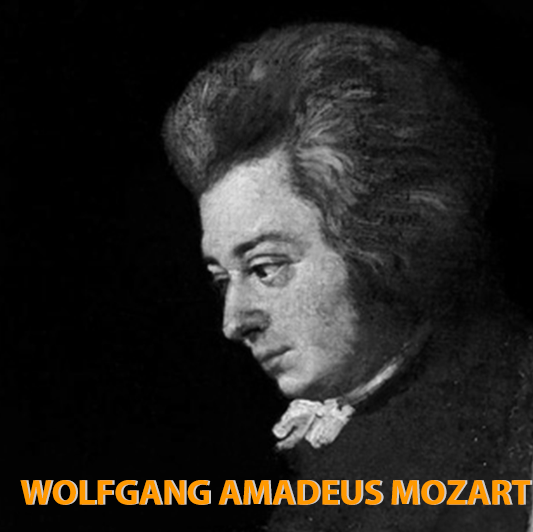
WOLFGANG AMADEUS MOZART (1756-1791)
Prolific composer and pianist, Wolfgang Amadeus Mozart was born in Salzburg, Austria as the youngest of seven children. At the age of five, he was formally composing and performing across Europe. At 13, he traveled to Italy with his father Leopold, where he wrote one of his earliest operas Mitridatite re di Ponto.
Mozart was well versed in many genres including symphonic music, concertos, chamber music and sonatas that profoundly shaped classical music. Though, Mozart was essentially an operatic composer. His collaboration with librettist Lorenzo Da Ponte birthed The Marriage of Figaro and Don Giovanni, some of his most highly acclaimed operas.
Prolific composer and pianist, Wolfgang Amadeus Mozart was born in Salzburg, Austria as the youngest of seven children. At the age of five, he was formally composing and performing across Europe. At 13, he traveled to Italy with his father Leopold, where he wrote one of his earliest operas Mitridatite re di Ponto.
Mozart was well versed in many genres including symphonic music, concertos, chamber music and sonatas that profoundly shaped classical music. Though, Mozart was essentially an operatic composer. His collaboration with librettist Lorenzo Da Ponte birthed The Marriage of Figaro and Don Giovanni, some of his most highly acclaimed operas.
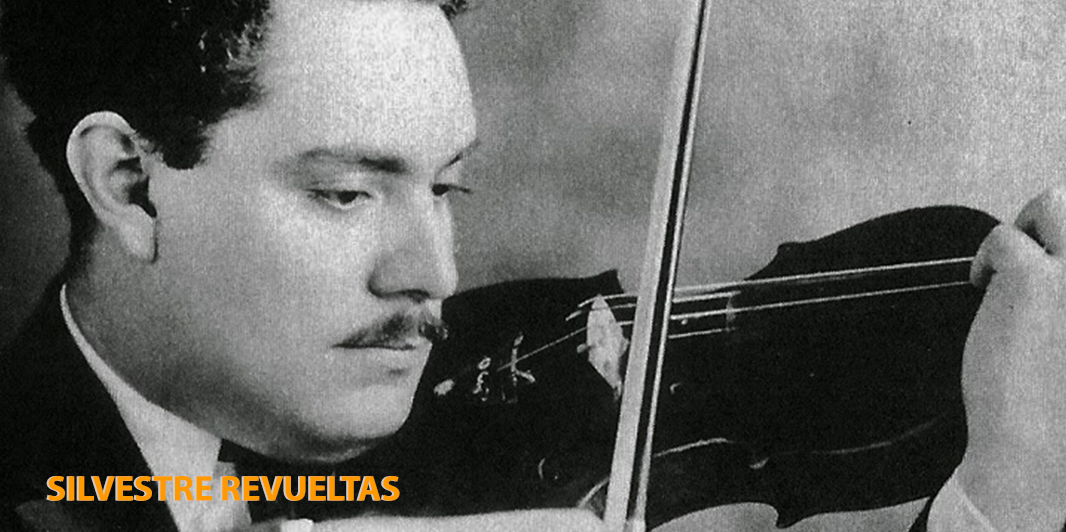
SILVESTRE REVUELTAS (1889-1940)
A composer and violinist, Silvestre Revueltas was born in Santiago Papasquiaro in Durango, Mexico. Later he and his family moved to Mexico City where he studied at the National Conservatory of Music in Mexico City and completed his music education at the Chicago College of Music, now part of Roosevelt University. During his music career Revueltas worked alongside Carlos Chavez - founder and director of the Sinfonia Orchestra de Mexico.
In 1929 Chávez offered him the position of assistant conductor of the Orquesta Sinfónica de México, which he held until 1936. Working together they were able to do much to promote Mexican music, offering a rich repertoire including works by the most outstanding and prominent names of the period. Additionally, he occupied various positions of importance in the musical life of Mexico. His works offer a vivid example of his extraordinary contribution to the form of the national Mexican symphonic poem.
A composer and violinist, Silvestre Revueltas was born in Santiago Papasquiaro in Durango, Mexico. Later he and his family moved to Mexico City where he studied at the National Conservatory of Music in Mexico City and completed his music education at the Chicago College of Music, now part of Roosevelt University. During his music career Revueltas worked alongside Carlos Chavez - founder and director of the Sinfonia Orchestra de Mexico.
In 1929 Chávez offered him the position of assistant conductor of the Orquesta Sinfónica de México, which he held until 1936. Working together they were able to do much to promote Mexican music, offering a rich repertoire including works by the most outstanding and prominent names of the period. Additionally, he occupied various positions of importance in the musical life of Mexico. His works offer a vivid example of his extraordinary contribution to the form of the national Mexican symphonic poem.

EDVARD GRIEG(1843-1907)
Edvard Grieg was a Norwegian composer and pianist who was highly regarded as one of the leading composers of the Romantic Era. At the very early age of 6, his mother taught him how to play piano. As he got older, a friend of the family, violinist Ole Bull recognized Grieg’s talent and at the age of 15 he went on to study piano at the Leipzig Conservatory.
Throughout his time at the conservatory he suffered from both heart and lung failure, however, that did not stop him from making his debut as a concert pianist in Karlshamn Sweden. Thereafter, Edvard received recognition of his work from Franz Liszt, Tchaikovsky and Percy Grainger. His compositions put the music of Norway on an international level, helping them to develop a national identity.
Edvard Grieg was a Norwegian composer and pianist who was highly regarded as one of the leading composers of the Romantic Era. At the very early age of 6, his mother taught him how to play piano. As he got older, a friend of the family, violinist Ole Bull recognized Grieg’s talent and at the age of 15 he went on to study piano at the Leipzig Conservatory.
Throughout his time at the conservatory he suffered from both heart and lung failure, however, that did not stop him from making his debut as a concert pianist in Karlshamn Sweden. Thereafter, Edvard received recognition of his work from Franz Liszt, Tchaikovsky and Percy Grainger. His compositions put the music of Norway on an international level, helping them to develop a national identity.

GORGONIO 'GORI' CORTES (1910-1998)
Better known as a virtuoso violinist, composer Gorgonio “Gori” Cortes a native of Tololá, Mexico, a small town located a short distance from Guadalajara, the capital of the state of Jalisco - the birthplace of mariachi. At an early age, Cortes joined the Orquesta Sinfónica de Guadalajara. As a composer, his most famous work is a violin showpiece, La Rondinella. Additionally, Cortés contributed a handful of unabashedly romantic orchestral pieces to the Mexican canon. Marila, Un Cielo Para Tí and Jalisco de Mis Amores are beloved in his home state but, sadly, little heard elsewhere.
Better known as a virtuoso violinist, composer Gorgonio “Gori” Cortes a native of Tololá, Mexico, a small town located a short distance from Guadalajara, the capital of the state of Jalisco - the birthplace of mariachi. At an early age, Cortes joined the Orquesta Sinfónica de Guadalajara. As a composer, his most famous work is a violin showpiece, La Rondinella. Additionally, Cortés contributed a handful of unabashedly romantic orchestral pieces to the Mexican canon. Marila, Un Cielo Para Tí and Jalisco de Mis Amores are beloved in his home state but, sadly, little heard elsewhere.

JOSE PABLO MONCAYO (1912-1958)
Born in Guadalajara Jose Pablo Moncayo was a pianist, percussionist, composer and conductor. Like Revueltas he also attended the Mexico City Conservatory and studied with Carlos Chavez, Candelario Hu’zar, Hernandez Moncada and iconic American composer Aaron Copland. In 1931, he joined the Orchestra Sinfonica de Mexico as a percussionist. It was here that Moncayo would study composition with Chavez. This workshop included Chavez’s colleagues as pupils, such as Vicente T. Mendoza, Candelario Huízar and Revueltas, and four students under twenty years of age: Daniel Ayala and Blas Galindo, and Salvador Contreraso. Painter and muralist Diego Rivera was a notable artistic colleague.
Moncayo would go on to be part of an artistic movement that explored what it meant to be Mexican, producing several works that symbolize the essence of the national aspirations and contradictions of Mexico in the 20th century. Moncayo later held the position as conductor of the Ochestra Sinfonica de Mexico from 1949 to 1954.
Born in Guadalajara Jose Pablo Moncayo was a pianist, percussionist, composer and conductor. Like Revueltas he also attended the Mexico City Conservatory and studied with Carlos Chavez, Candelario Hu’zar, Hernandez Moncada and iconic American composer Aaron Copland. In 1931, he joined the Orchestra Sinfonica de Mexico as a percussionist. It was here that Moncayo would study composition with Chavez. This workshop included Chavez’s colleagues as pupils, such as Vicente T. Mendoza, Candelario Huízar and Revueltas, and four students under twenty years of age: Daniel Ayala and Blas Galindo, and Salvador Contreraso. Painter and muralist Diego Rivera was a notable artistic colleague.
Moncayo would go on to be part of an artistic movement that explored what it meant to be Mexican, producing several works that symbolize the essence of the national aspirations and contradictions of Mexico in the 20th century. Moncayo later held the position as conductor of the Ochestra Sinfonica de Mexico from 1949 to 1954.


HECTOR GUZMAN
A native of Mexico, Hector Guzman achieved an impressive reputation as an organist. In 1978, he gained world acclaim when he became the first Latin-American ever chosen as a finalist in France’s “Grand Prix de Chartres”- the world’s most prestigious international organ competition. Most recently, Guzman has been selected as the newest conductor of the Corpus Christi Symphony Orchestra.
As a guest conductor, Maestro Guzman has appeared with all of Mexico’s most prestigious orchestras, as well as the San Antonio, Dallas, Wheeling and Phoenix symphonies and the Chicago Sinfonietta in the United States, as well as various orchestras throughout Europe. Additionally, Guzman has been honored with many awards including “Artistic Merit Medal” by the Government of the State of Mexico for his contributions to music world-wide, the “Artistic Silver Medal” awarded by the government of his native state, Zacatecas, Mexico and, the Mozart Medal, the highest musical honor in Mexico, awarded by the Embassy of Austria and the Mozart Academy in Mexico City.
A native of Mexico, Hector Guzman achieved an impressive reputation as an organist. In 1978, he gained world acclaim when he became the first Latin-American ever chosen as a finalist in France’s “Grand Prix de Chartres”- the world’s most prestigious international organ competition. Most recently, Guzman has been selected as the newest conductor of the Corpus Christi Symphony Orchestra.
As a guest conductor, Maestro Guzman has appeared with all of Mexico’s most prestigious orchestras, as well as the San Antonio, Dallas, Wheeling and Phoenix symphonies and the Chicago Sinfonietta in the United States, as well as various orchestras throughout Europe. Additionally, Guzman has been honored with many awards including “Artistic Merit Medal” by the Government of the State of Mexico for his contributions to music world-wide, the “Artistic Silver Medal” awarded by the government of his native state, Zacatecas, Mexico and, the Mozart Medal, the highest musical honor in Mexico, awarded by the Embassy of Austria and the Mozart Academy in Mexico City.

CUERDAS CLASSICAS
Cuerdas Clásicas is a not-for-profit cultural organization marked by the qualities of troubadours and bohemians who at times perform in formal dress and tuxedos, interpreting melodies of a classical and semi-classical nature, and at times perform as members of an Estudiantina, wearing vestments in accordance with the customs of sixteenth century Spain.
The founder of the organization is Rodolfo Hernandez, who in the year 1976, gathered together a group of youth whose only medium was their instruments and their desire to elevate the arts. These youngsters propelled themselves with their mandolins, guitars and romantic melodies that demonstrated their capacities and professionalism.
Cuerdas Clásicas is a not-for-profit cultural organization marked by the qualities of troubadours and bohemians who at times perform in formal dress and tuxedos, interpreting melodies of a classical and semi-classical nature, and at times perform as members of an Estudiantina, wearing vestments in accordance with the customs of sixteenth century Spain.
The founder of the organization is Rodolfo Hernandez, who in the year 1976, gathered together a group of youth whose only medium was their instruments and their desire to elevate the arts. These youngsters propelled themselves with their mandolins, guitars and romantic melodies that demonstrated their capacities and professionalism.
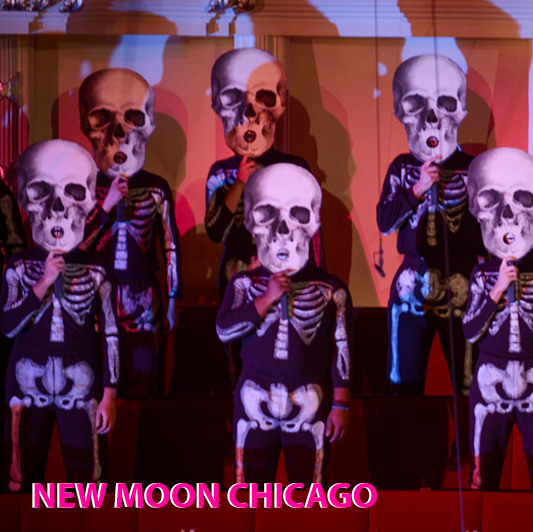
NEW MOON CHICAGO
NewMoon Chicago's Spectacle Services create an ultra-premium, cutting-edge aesthetic that transform guest experiences and redefine "exceptional event".
NewMoon Spectacles pair performance art, mechanical contraptions, and the fundamental elements of an event —from serving food to musical performances— to create a new event element that is as delightful as it is unexpected.
NewMoon Chicago's Spectacle Services create an ultra-premium, cutting-edge aesthetic that transform guest experiences and redefine "exceptional event".
NewMoon Spectacles pair performance art, mechanical contraptions, and the fundamental elements of an event —from serving food to musical performances— to create a new event element that is as delightful as it is unexpected.

CHERYL FRAZES HILL
Countertenor, Conductor and Director, Mark Crayton is hailed by critics and audiences for the pure beauty of his voice, his expressive and insightful interpretations, his natural musicality, and his crowd-pleasing productions! Winner of the Classical Singer International Vocal Competition, Mr. Crayton performs on concert stages and in opera houses throughout the United States and Europe.
He has appeared with the Houston Symphony, Indianapolis Symphony, Sarasota Symphony, Fargo Symphony, Sheboygan Symphony, Milwaukee Symphony, Chicago's Music of the Baroque, Chicago Baroque Ensemble, Ensemble Voltaire, La Pettite Bande, the Netherlands Kammerkoor, El Ayre Español, as well as many others.
Countertenor, Conductor and Director, Mark Crayton is hailed by critics and audiences for the pure beauty of his voice, his expressive and insightful interpretations, his natural musicality, and his crowd-pleasing productions! Winner of the Classical Singer International Vocal Competition, Mr. Crayton performs on concert stages and in opera houses throughout the United States and Europe.
He has appeared with the Houston Symphony, Indianapolis Symphony, Sarasota Symphony, Fargo Symphony, Sheboygan Symphony, Milwaukee Symphony, Chicago's Music of the Baroque, Chicago Baroque Ensemble, Ensemble Voltaire, La Pettite Bande, the Netherlands Kammerkoor, El Ayre Español, as well as many others.
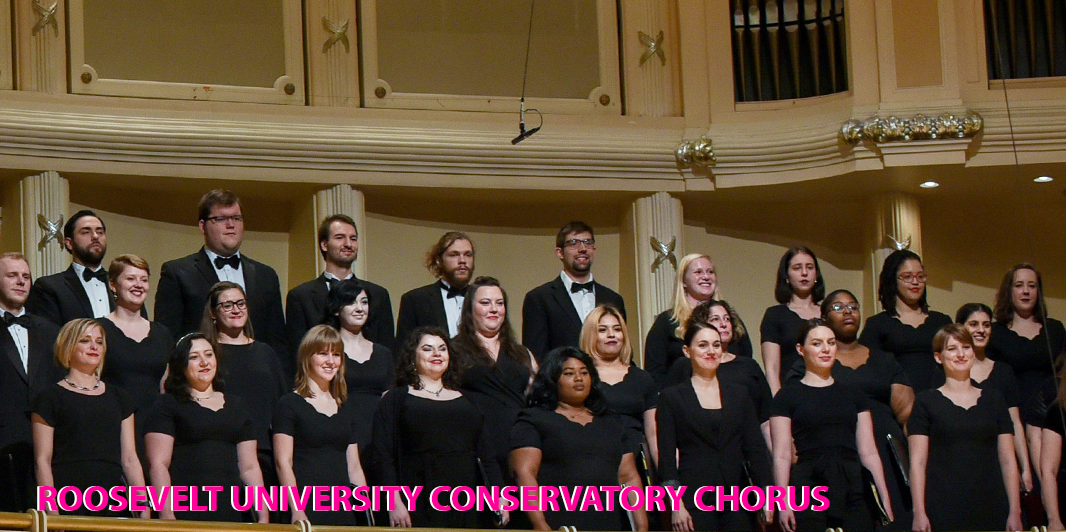
Roosevelt University Conservatory Choirs
Led by Mark Crayton and Cheryl Frazes Hill, Roosevelt University’s Chicago College of Performing Arts Conservatory Choirs have a tradition of providing students with a variety of performance opportunities. From classical choral music performed at prestigious national conferences to appearances with the Rolling Stones, students gain experience performing in diverse styles and venues. In this concert, the choirs are joined by the Roosevelt Alumni Chorus. This is Roosevelt’s fourth appearance with Chicago Sinfonietta.
Led by Mark Crayton and Cheryl Frazes Hill, Roosevelt University’s Chicago College of Performing Arts Conservatory Choirs have a tradition of providing students with a variety of performance opportunities. From classical choral music performed at prestigious national conferences to appearances with the Rolling Stones, students gain experience performing in diverse styles and venues. In this concert, the choirs are joined by the Roosevelt Alumni Chorus. This is Roosevelt’s fourth appearance with Chicago Sinfonietta.

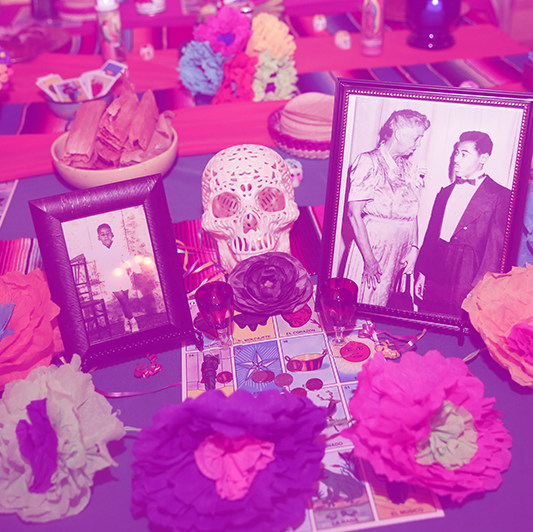
Chicago Sinfonietta has presented a concert dedicated to this colorful Mexican holiday since 2010 as established by our founder Maestro Paul Freeman.
As part of the celebration, and keeping with tradition, each year we present an ofrenda - a collection of offerings placed on a ritual altar or sometimes created around loved ones graves. This often includes beloved relics, portraits of them, and favorite foods and drinks providing a feast for the visiting spirits of the departed loved one being honored.

The title Libertango is a portmanteau merging "Libertad" (Spanish for liberty) and "Tango", symbolizing Piazzolla's break from Classical Tango to Tango Nuevo.
Recorded and published in 1974 in Milan, this piece reach popular success redefining Tango and breakout into popular culture appearing on over 500 separate releases including Grace Jones's song I've Seen That Face Before (Libertango) which uses the same music.

Redes, which means "nets" in Spanish, was originally written as a film score by the Mexican Composer Revueltas for the film of the same name concerning the efforts of exploited fishermen to unite. A suite in two parts, this work includes music associated with the events of the film concerning the efforts of exploited fishermen to unite.
A true nationalists, Revueltas once shared "I like all kinds of music. I can even stand some of the classics, and some of my own works, but I prefer the music of the people of the ranches and villages of my country.
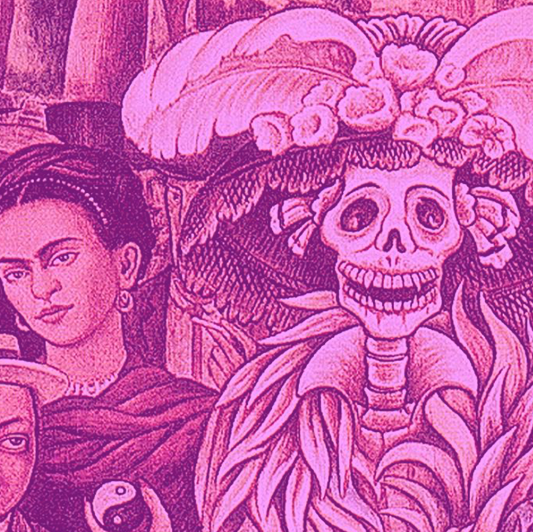
One of the most recognizable images associated with Día de los Muertos, La Calavera Catrina is most famously recognized as depicted in a zinc etching by famous Mexican artist José Guadalupe Posada. She is offered as a satirical portrait of those Mexican natives who, Posada felt, were aspiring to adopt European aristocratic traditions in the pre-revolution era.
While Posada's work introduced the character, the popularity of La Calavera Catrina as well as her name is derived from a work by artist Diego Rivera in his 1947 15 meter long mural Sueño de una Tarde Dominical en la Alameda Central (Dream of a Sunday afternoon along Central Alameda), seen here.
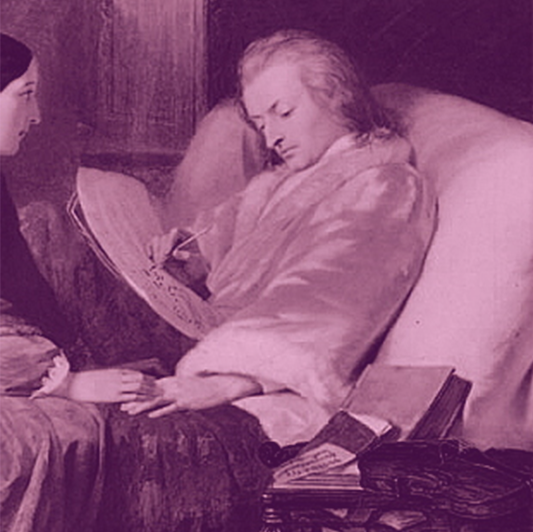
A Requiem is also known as a Mass for the dead that is offered for the repose of the soul or souls of one or more deceased persons. Mozart began composing the Requiem , the last year of his short life, and died before he could complete it.
The Requiem contains some of Mozart’s darkest music. The offer to write this work came during a time of financial troubles for Mozart, and he accepted the commission from the stranger, who remained anonymous. This and Mozart's declining health, at the time, have added to the lure of a work that the composer reportedly began to imagine he was writing for himself.

Originally only 90 minutes of incidental music for a play of the same name, Grieg later made his work Peer Gynt into two four-movement suites including one of some of most famous works in popular culture, Morning Mood & In the Hall of the Mountain King. The Death of Aaseis an elegy depicting Peer Gynt's mother Aase dying alone on a mountain. This haunting, stark piece shows Grieg's masterful grasp of simplicity and power.
Marigolds, pictured here, are quintessential to this holiday as they are thought to guide the spirits to their altar to visit the living wherever their loved are thinking of them during this celebration.
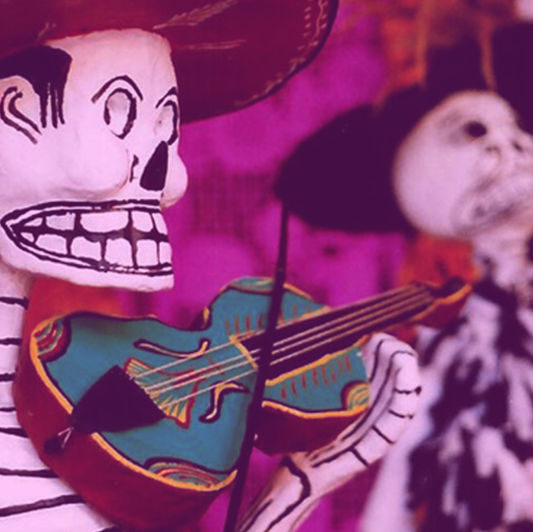
Gorgonio “Gori” Cortés, a native of Tololá, Mexico, a small town located a short distance from Guadalajara, the capital of the state of Jalisco. Guadalajara is a vibrantly musical city and the birthplace of mariachi.
Cortés is better known as a virtuoso violinist. As a composer, his most famous work is a violin showpiece, La Rondinella.
Additionally, Cortés contributed a handful of unabashedly romantic orchestral pieces to the Mexican canon. Marila, Un Cielo Para Tí and Jalisco de Mis Amores are beloved in his home state but, sadly, little heard elsewhere. Cuerdas Clásicas will join the Sinfonietta in this performance.
